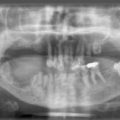Differences between kilovoltage and electron therapy
While both modalities are suited for superficial treatments, the mechanism of dose deposition is different, resulting in clinically significant differences in the features of the dose distribution.
Depth dose characteristics will usually favour electron beams due to the sharp fall off in dose beyond the PTV, although if the prescribed dose is to be delivered to the patient, surface bolus material may be required for lower energy (typically <10 MeV) electron beams. This is due to the build-up effect present in electron beams, but which is negligible in kV x-ray beams where the maximum dose is at the surface.
The predominant interaction of a low energy kV photon beam is photoelectric absorption with a probability of interaction in tissue approximately depending on Z4 (Z being the atomic number). Therefore, there is an enhanced dose absorption in bone, which can be significant if high doses are prescribed to superficial regions with underlying bone, such as the scalp. At 100 kV (3 mm Al HVL), the dose absorption in bone will be 4.5 times greater than in water. By 300 kV (3 mm Cu HVL), this is reduced to 1.05 times the water dose as Compton interactions predominate and the atomic number of the absorbing material is no longer significant.
The relatively high energy of electrons in an electron beam compared with those generated in a kV beam results in a large range and they can therefore penetrate into tissue well beyond the field edge. The consequence of this is a much broader penumbral region than is present in a kV x-ray beam, and this penumbra varies with depth. Therefore, the use of electron beams to treat PTVs very close to critical structures, such as the lens, should be avoided if possible. The sharp penumbra of a kV beam makes it the ideal modality where critical structures are adjacent.
The SSD of a kV machine will typically be far shorter than a linear accelerator usually ranging from 25 to 50 cm. Therefore, the inverse square law dependence of dose will be far more significant in kilovoltage than electron treatments, e.g. a 2 cm air gap results in a dose reduction of approximately 12% at 30 cm SSD compared with a reduction of approximately 4% for an electron beam at a standard linear accelerator SSD.
There is usually less demand on a kV treatment machine than on a linear accelerator, so where the physical differences in the beam are of no clinical significance, then the use of kV may reduce departmental waiting times and facilitate a treatment starting sooner than on a linear accelerator. For a few patients, the increased treatment time arising from the lower dose rates of a kilovoltage unit compared to those from a linear accelerator may be a disadvantage.
Stay updated, free articles. Join our Telegram channel

Full access? Get Clinical Tree




